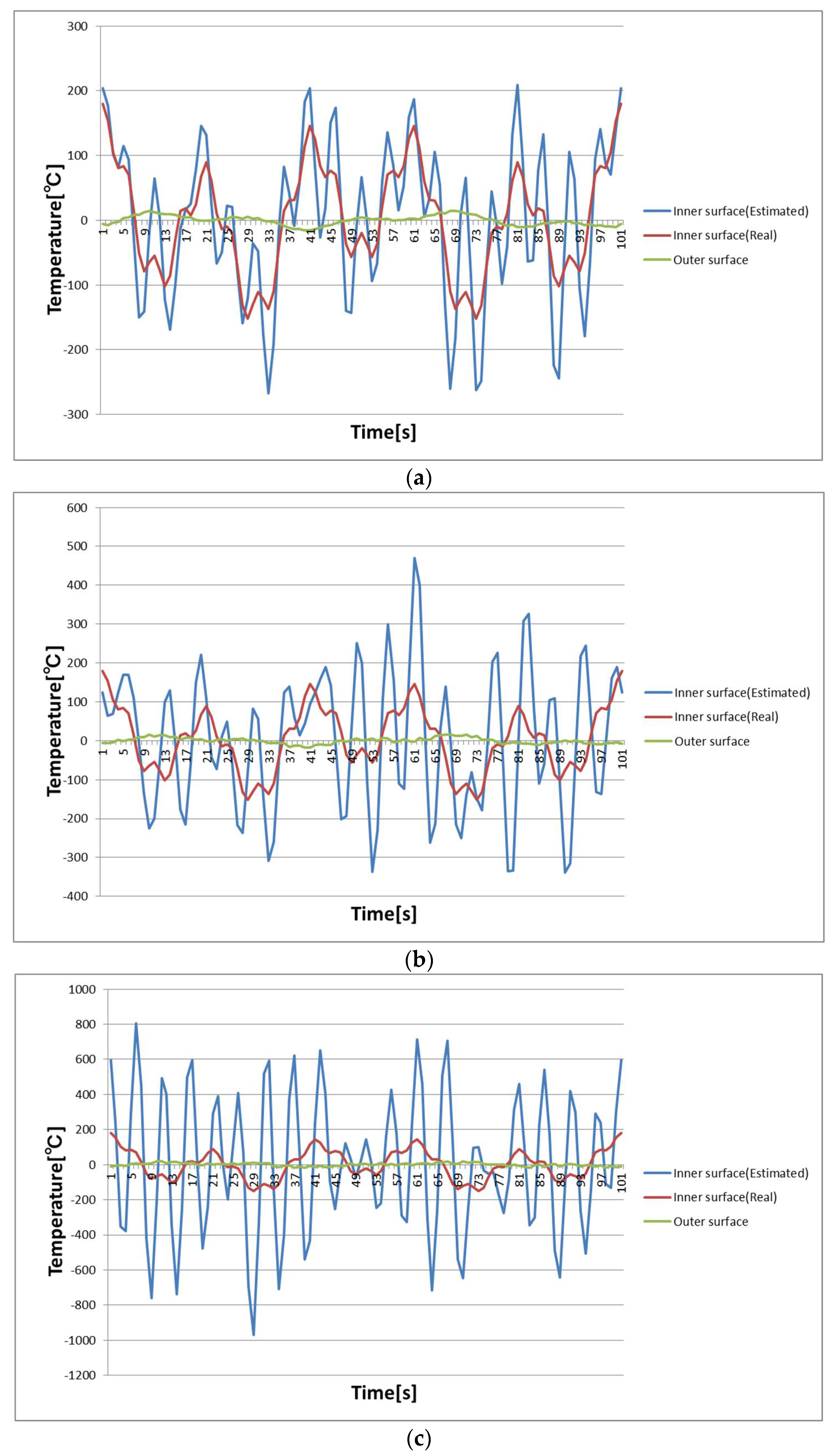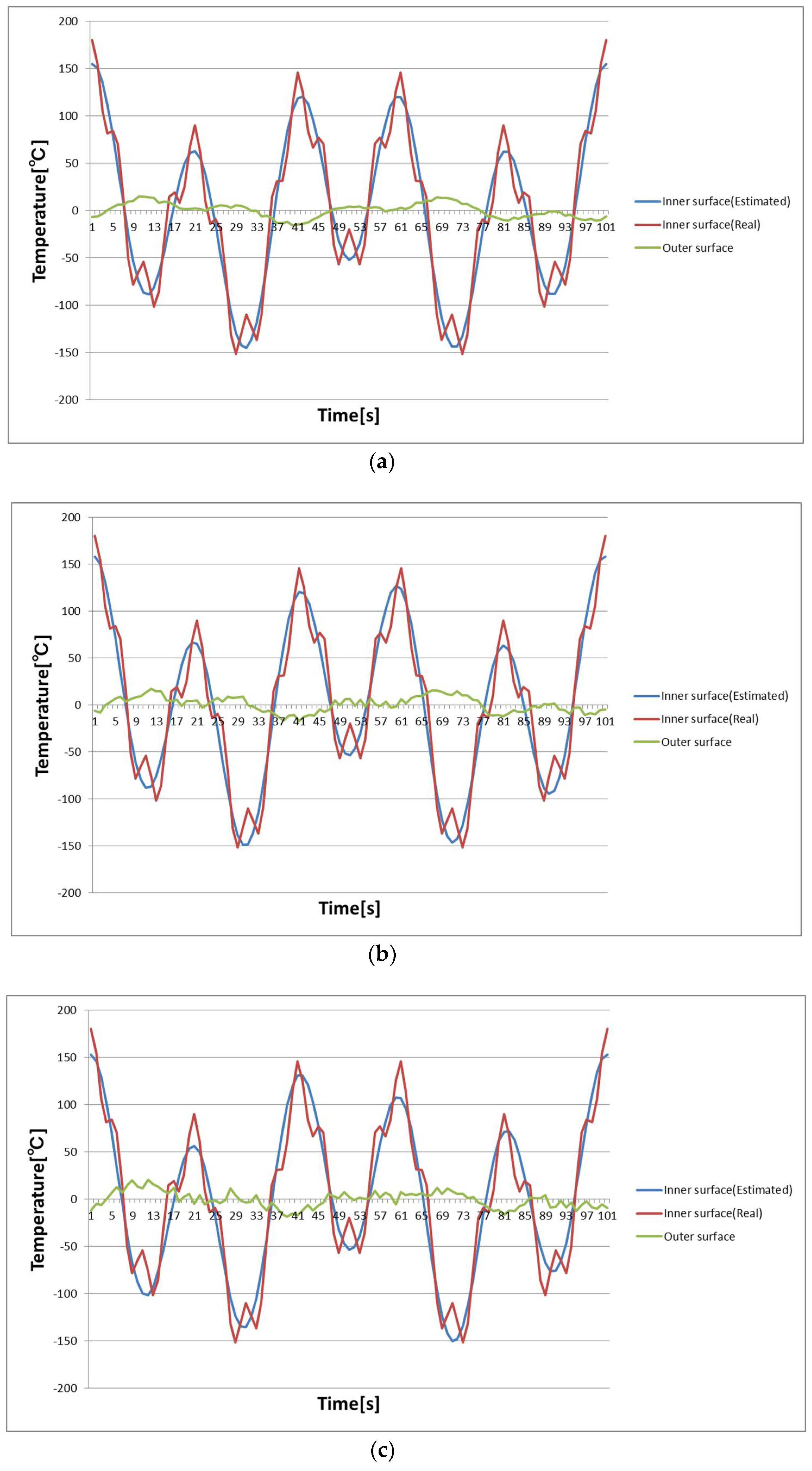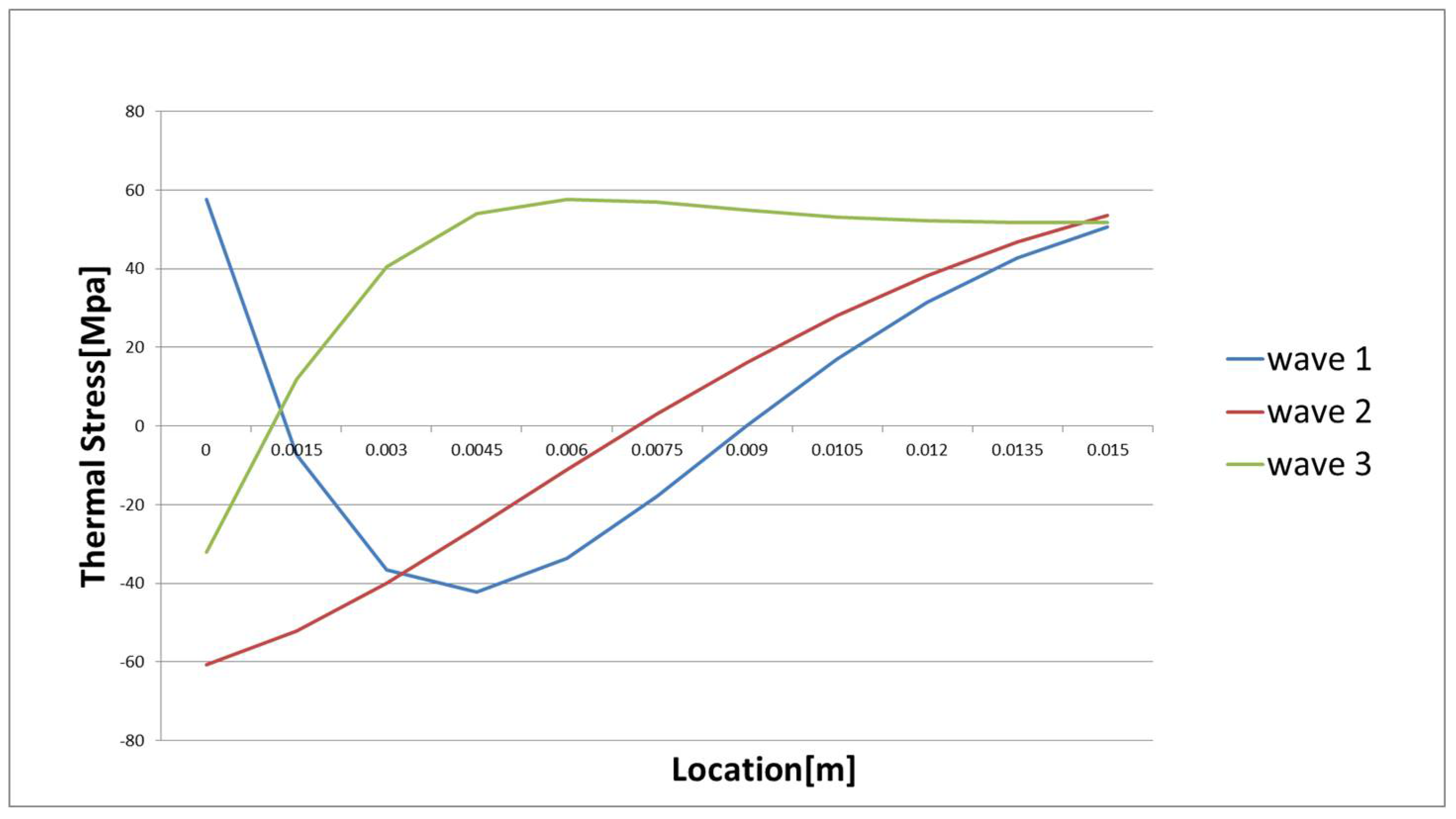Inverse Analysis for Estimating Temperature and Residual Stress Distributions in a Pipe from Outer Surface Temperature Measurement and Its Regularization †
Abstract
:1. Introduction
2. Mathematical Structure of Temperature Distribution in a Thin Pipe
3. Inverse Method for Estimating Temperature and Thermal Stress Distributions
4. Regularization Method
5. Estimation of Thermal Stress Distribution
6. Numerical Simulations
7. Conclusions
References
- Meeker, J.; Segall, A.E.; Gondar, E. An Inverse Method for the Determination of Thermal Stress-Intensity Factors under Arbitrary Thermal-Shocks. J. Press. Vessel Technol. Trans. ASME 2018, 130, 041206. [Google Scholar] [CrossRef]
- Segall, A.E.; Engels, D.; Hirsh, A. Transient Surface Strains and the Deconvolution of Thermoelastic States and Boundary Conditions. J. Press. Vessel Technol. Trans. ASME 2019, 131, 011201. [Google Scholar] [CrossRef]
- Kasahara, N.; Takasho, H.; Yacumpai, A. Structural Response Function Approach for Evaluation of Thermal Striping Phenomena. Nucl. Eng. Des. 2002, 212, 281–292. [Google Scholar] [CrossRef]
- Kamide, H.; Igarashi, M.; Kawashima, S.; Kimura, N.; Hayashi, K. Study on Mixing Behavior in a Tee Piping and Numerical Analysis for Evaluation of Thermal Striping. Nucl. Eng. Des. 2009, 239, 58–67. [Google Scholar] [CrossRef]
- Ioka, S.; Kubo, S.; Ochi, M.; Hojo, K. Development of Inverse Analysis Method of Heat Conduction and Thermal Stress for Elbow (Part I). J. Press. Vessel Technol. Trans. ASME 2016, 138, 051202. [Google Scholar] [CrossRef]
- Hojo, K.; Ochi, M.; Ioka, S.; Kubo, S. Development of Inverse Analysis Method of Heat Conduction and Thermal Stress for Elbow—Part II. J. Press. Vessel Technol. Trans. ASME 2016, 138, 051207. [Google Scholar] [CrossRef]



| Wave | 1 | 2 | 3 |
|---|---|---|---|
| Amplitude [°C] | 100 | 50 | 30 |
| Cycle Period [s] | 20 | 50 | 5 |
Publisher’s Note: MDPI stays neutral with regard to jurisdictional claims in published maps and institutional affiliations. |
© 2018 by the authors. Licensee MDPI, Basel, Switzerland. This article is an open access article distributed under the terms and conditions of the Creative Commons Attribution (CC BY) license (https://creativecommons.org/licenses/by/4.0/).
Share and Cite
Kubo, S.; Taguwa, S. Inverse Analysis for Estimating Temperature and Residual Stress Distributions in a Pipe from Outer Surface Temperature Measurement and Its Regularization. Proceedings 2018, 2, 407. https://doi.org/10.3390/ICEM18-05284
Kubo S, Taguwa S. Inverse Analysis for Estimating Temperature and Residual Stress Distributions in a Pipe from Outer Surface Temperature Measurement and Its Regularization. Proceedings. 2018; 2(8):407. https://doi.org/10.3390/ICEM18-05284
Chicago/Turabian StyleKubo, Shiro, and Shoki Taguwa. 2018. "Inverse Analysis for Estimating Temperature and Residual Stress Distributions in a Pipe from Outer Surface Temperature Measurement and Its Regularization" Proceedings 2, no. 8: 407. https://doi.org/10.3390/ICEM18-05284




